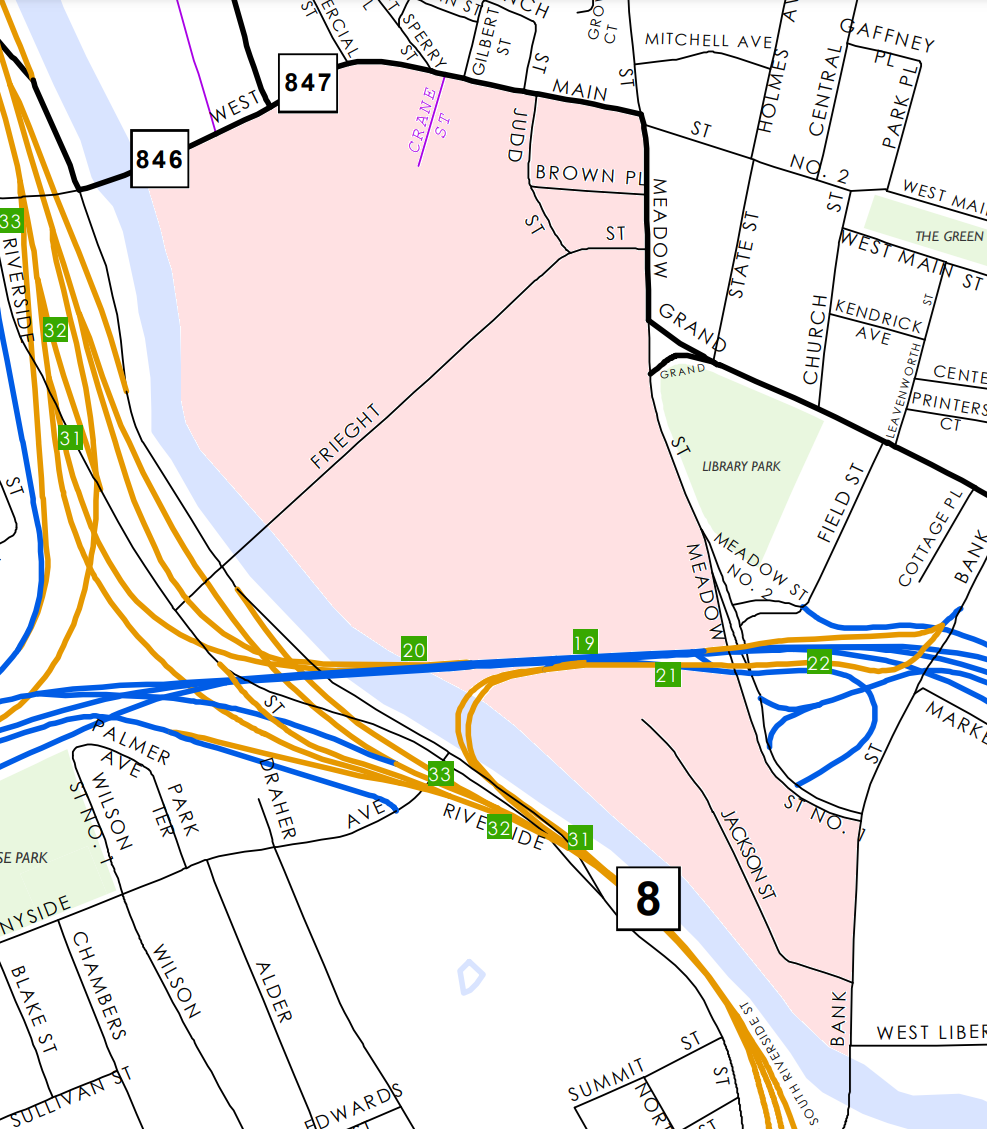Profile of the Dog's Nest Neighborhood
|
Living conditions were undoubtedly cramped. Multi-generational families often shared homes with numerous boarders. Privacy would have been scarce. Yet the archaeological evidence also shows attempts to improve quality of life. At 23 Jackson Street, the Kelly family installed indoor plumbing and toilets in their houses, running sewer pipes out to the Naugatuck River. This was a significant investment at a time when most residents still relied on backyard outhouses.
The excavations uncovered numerous artifacts that speak to the material lives of Dog's Nest residents - fragments of ceramic dishes, glass bottles, smoking pipes, buttons, marbles, and more. A small bowl from a holy water font, found in the ruins of 32 Jackson Street, hints at the Catholic faith shared by most Irish and Italian residents. The overall assemblage suggests a modest but not impoverished standard of living. Demise of the Neighborhood Despite its vitality, the Dog's Nest was ultimately doomed by Waterbury's continued industrial growth. The neighborhood found itself increasingly hemmed in by expanding factories, railroad yards, and the gas works. In the first decade of the 20th century, as part of a major rail expansion project, the New York, New Haven and Hartford Railroad began buying up properties in the area. Between 1904 and 1911, all of the houses in the Dog's Nest were demolished. The residents scattered to other parts of Waterbury. The land was absorbed by the railroad and the gas company, which built a massive gas holder on part of the site. Jackson Street was realigned, and the former neighborhood was buried beneath fill and largely forgotten. Rediscovery and Legacy It was not until 2015 that the remains of the Dog's Nest neighborhood were rediscovered. Archaeological testing in advance of road construction projects exposed the buried foundations of several houses. More extensive excavations in 2017 uncovered the remnants of seven houses and yielded a wealth of information about this lost community. While the physical traces of the Dog's Nest have long since vanished from Waterbury's landscape, the legacy of its residents lives on. The Irish and Italian immigrants who made their homes here were part of the workforce that helped make Waterbury the "Brass Capital of the World." Their labor and sacrifices contributed to the city's growth and prosperity in the late 19th and early 20th centuries. The story of the Dog's Nest also reflects broader themes in American urban and immigration history. It illustrates the challenges faced by successive waves of immigrants as they sought to establish themselves in a new country. It shows how industrialization shaped the urban landscape, sometimes at the expense of existing communities. And it demonstrates the economic and social mobility achieved by many immigrant families over the course of a generation or two. Today, the former site of the Dog's Nest is slated to become part of Waterbury's new Riverfront Park, transforming this long-neglected area into a public space for recreation. As the city looks to revitalize its downtown and riverfront, the rediscovery of the Dog's Nest serves as a reminder of the diverse communities and rich history that have shaped Waterbury over the centuries. Though the neighborhood itself is gone, archaeological research has ensured that the story of the Dog's Nest and its inhabitants will not be forgotten. - written by Claude Sonnet 
Image by Dall-e-3
|
The Dog's Nest Neighborhood Map
This map is overlaid by a modern-day map of the area.


